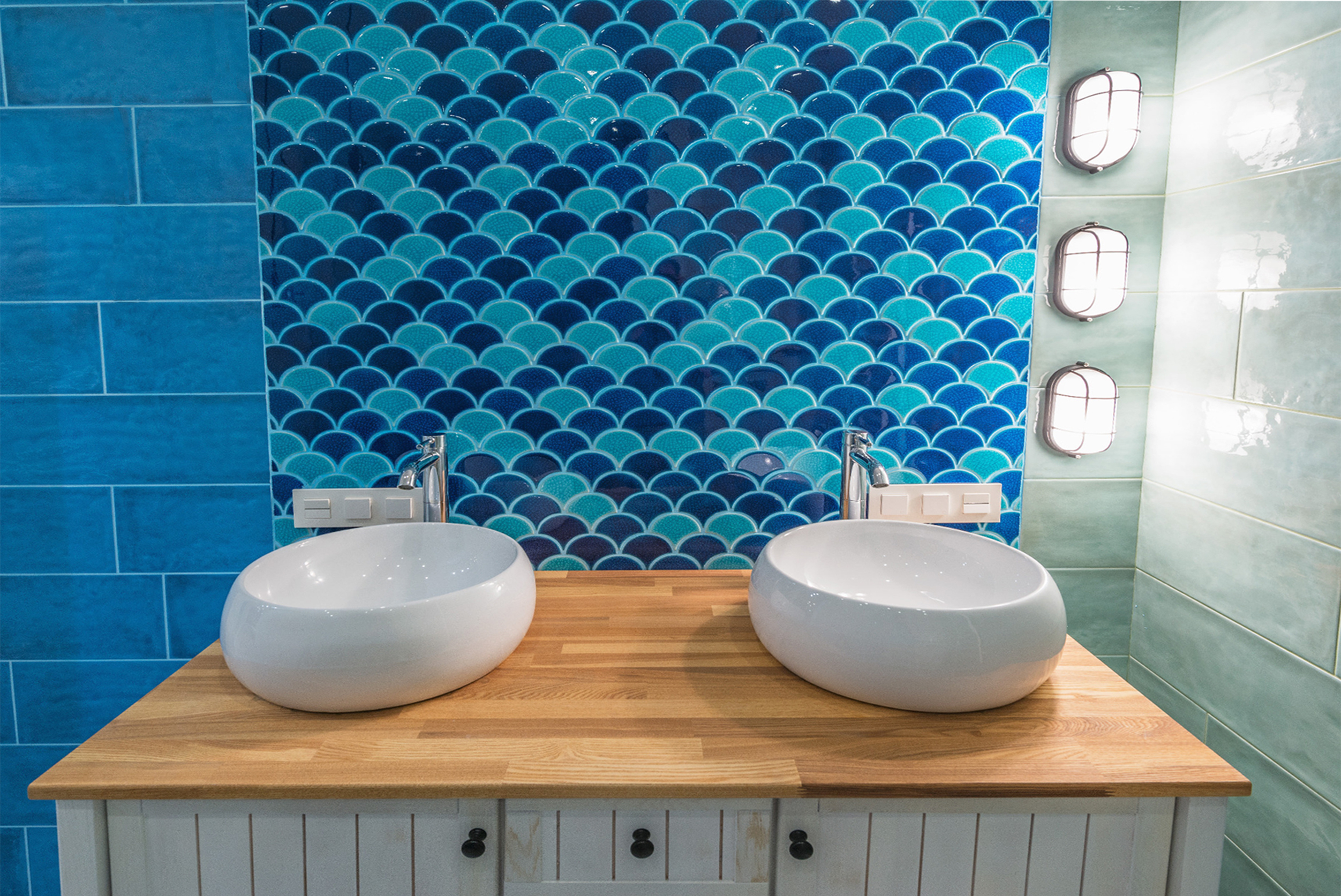Tips for trendy, sustainable and healthy design of your living space
There are no limits to your imagination when it comes to home furnishings – whether bright and colorful, in subtle natural tones or a combination of both. But in addition to the design, there are other points to consider. Our expert will tell you how to furnish your home in a way that is as stylish as it is environmentally friendly and healthy.
Tip 1: Embrace your own style – anything goes
The trend towards working from home means that people are spending even more time in enclosed spaces than before. “Cocooning”, i.e. the desire to stay “nested up at home”, combined with Scandinavian “hygge”, which stands for a warm and cozy living atmosphere, are currently determining the furnishing style. But cooler trends are also in demand. No matter which living style you prefer, wood is always a popular material, because it radiates cozy warmth and has a positive effect on the indoor climate. Classic parquet flooring is still very much in demand and scores highly in terms of sustainability, especially when firmly glued to the subfloor. For years now, oak has been the wood of choice for many houseowners. But other wood species such as beech, ash, maple, cherry, walnut and birch are also quite popular. Due to their long service life, natural stone flooring has a strong appeal to homeowners, especially in high-traffic areas such as corridors, hallways, cloakrooms and guest toilets. Ceramic tiles, currently also available in cool shades of blue and grey, are mainly installed on bathroom walls and floors.
Tip 2: Furniture and textiles – who dares wins!
Even with trends coming and going at a rapid pace, wood is still the material of choice for indoor furniture. Especially solid oak and walnut are among the favored wood species. Modern kitchen design has been characterized for quite some time by dark tones as well as surfaces with a groove structure and vertical wood slats. Now, this style is also very much in vogue for dining and living rooms. It is accompanied by furniture with dark lacquered surfaces.
Don’t be afraid to try bold combinations. Take home textiles, for example: Natural tones such as earth or coffee brown can be combined with fabrics in bright shades of rose, pink and purple. Interior walls are mostly plastered these days and either have a smooth finish or a rough texture. In addition to classic white, there is an increasing number of other plaster colors, ranging from muted shades of beige to bold colors.
Tip 3: Keep an eye on supply chains
Whether building materials, surfaces or furnishings – houseowners and tenants should focus more closely on the careful selection of products for their home. In the interests of sustainability, they should find out more about the supply chains and ask questions such as: Where does the wood for the flooring come from? Was the furniture produced in a climate-neutral way? Do the manufacturers rule out child labor?
Tip 5: Whatch out for low-emission products
Consumers are well advised to use products carrying the EMICODE® seal of the GEV, which is the German Association for the Control of Emissions in Products for Flooring Installation, Adhesives and Building Materials. If professional craftsmen are hired to do the job, it is recommended to address the choice of building products before awarding the contract. Products that have been given the EMICODE® quality seal undergo stringent tests that guarantee the lowest possible VOC emissions (VOCs = volatile organic compounds) for both installers and consumers. Manufacturers must have their products repeatedly subjected to unannounced spot checks. They may only advertise their products with an EMICODE® EC label if the emission quality has been recently tested and certified. Meanwhile, a large number of building materials have been certified with the EMICODE® label, including parquet and tile adhesives, joint fillers, adhesive tapes, plasters, surface treatment products like waxes or oils, and many more. This way, you can choose from a wide range of low-emission products and materials for indoor use. Similar to the construction industry, the furniture industry has also introduced quality seals that provide information about the safety, quality and healthiness of home furnishings.

Photo: © serjio74/123rf/GEV
Do You Have Questions?
If you have any questions on certain topics or want to contact us for another reason, please contact us by phone or email.
Phone: +49 (0)211 843 449 – 01
info@emicode.com
Share article on Social Media:
